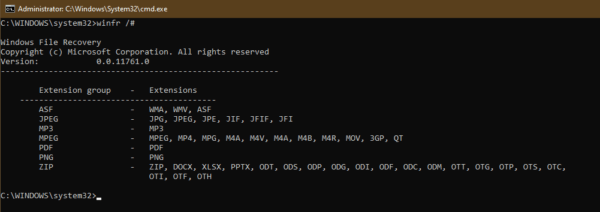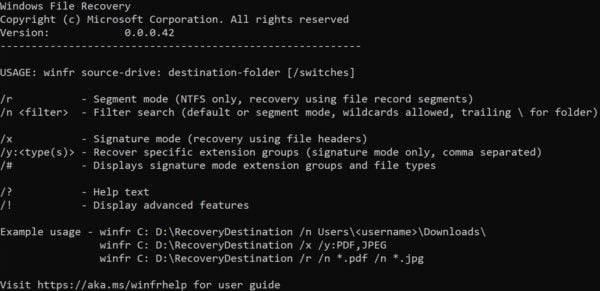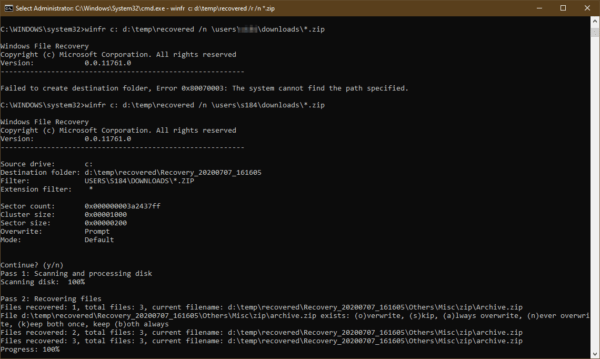Up until recently, if you accidentally deleted a file that has passed the recycle bine and doesn’t have the backup, your best chance is to use one of those 3rd party file recovery tools and take your chance there. Microsoft says there is a better way by releasing a free built-in Windows File Recovery Tool for all Windows 10 users.

It’s available through the Store app but is essentially a command-line tool that runs through the elevated Command Prompt window when launched. It currently works for Windows 10 2004 and above so if you are still running on a Windows 10 version that’s below you may have to wait until you upgrade.
What to recover?
It recovers data from a local installed hard drive, an external drive, or a USB flash drive and supports many file types out of the box, such as ZIP, JPEG, MP3, PDF, PNG, etc. Use the following command to list all the supported file types.
winfr /#

The supported file systems includes:
- FAT or exFAT
- NTFS, and
- ReFS
Recovery mode
There are 3 types of recovery mode from Windows File Recovery tool.
- Default mode that uses the master file table (MFT) to locate files. It’s the fastest mode that scans through the file structure and finds the files that were just deleted recently.
- Segment mode that scans the disk bits by bits to try recovering files. Since it doesn’t depend on the MFT table it’s best suited for recovery files from a formatted drive or being deleted for a while.
- Signature mode that best suited for recovering specific file types from a non-NTFS file system.
If you are not sure where to start, try the Default mode first, and then Segment and Signature when all failed.
Syntax
winfr source-drive: destination-folder [/switches]
The source and destination work the best when they are on different drives. The destination folder needs to exist first. The recovered file will be stored in a subfolder inside the destination folder.

Examples
To recover all zip files in my downloads folder to d:temp folder in default mode:
winfr c: d:temp /n usersusernamedownloads*.zip

To recover PDF and Word files from my C: drive to d:temp folder in Segment mode:
winfr c: d:temp /r /n *.pdf /n * *.docx
To recover any files with “confidential” in the filename to d:temp folder:
winfr c: d:temp /r /n *confidential*
To recovery JPEG and PNG photos from my C: drive to d:temp folder in Signature mode:
winfr c: d:temp /x /y:JPEG,PNG
So, next time when you help your friend who accidentally deleted an important file, wiped clean entire drive or a corrupted SD card full of precious memory, give Windows File Recovery a try. You may be a hero without spending a dime on any of the commercial tools out there.
The post Recover Deleted Files with Windows File Recovery Tool appeared first on Next of Windows.
